In Queensland, Australia, building kit homes follows strict rules. These rules make sure these homes are safe and meet quality standards. They are seen as Class 1a dwellings under the National Construction Code (NCC).
It’s important for homeowners or builders to know these rules. This knowledge helps ensure your kit home project meets all the necessary standards.
Kit homes in Queensland must follow the state’s building product laws. Sometimes, they need approvals from local governments. This process includes getting approvals for building and plumbing work, based on the Planning Act 2016.
By knowing these regulations, you can make sure your kit home project is successful. It will also meet all the required standards and rules.

Key Takeaways
- Queensland’s Building Codes for Kit Homes outline the essential requirements for the construction and compliance of prefabricated homes.
- Kit homes are classified as Class 1a dwellings under the National Construction Code (NCC) and must adhere to non-conforming building product laws.
- Obtaining the necessary Development Approvals for Building Works and Plumbing and Drainage Works is often required, subject to the Planning Act 2016.
- Understanding the regulatory landscape is crucial for a successful and compliant kit home project in Queensland.
- Familiarizing yourself with the building codes and regulations can help ensure your kit home meets all safety and compliance standards.
Understanding Kit Homes: An Overview
Kit homes, also known as prefabricated or modular homes, are popular in Queensland. They are made off-site and then put together on your land. This method is cost-effective and offers many benefits.
What Are Kit Homes?
Kit homes are built in a factory and then moved to your site. They must follow building codes, like the National Construction Code. This lets you pick your design and make it your own.
Benefits of Choosing Kit Homes
- Potential Cost-Effectiveness: Kit homes can save money because they’re made in a factory. This means less labor cost on-site.
- Faster Construction Times: Because they’re modular, kit homes are built quicker. This shortens the project timeline.
- Flexibility in Design: You can choose from many designs or make your own. This lets you match your home to your lifestyle.
- Compliance with Modular Home Standards: Kit homes meet all the necessary building codes. This ensures they’re safe and meet standards.
Kit homes are a great choice for building your dream home. They’re affordable, customizable, and follow all the building rules.
Key Queensland Building Codes for Kit Homes
Building a kit home in Queensland means following certain rules. These rules make sure the home is safe and meets local standards. The National Construction Code (NCC) sets the standards for kit homes. It covers important areas like how strong the home is, how it handles weather, fire safety, and energy use.
Building and Construction Regulations
In Queensland, builders need a license for work over $3,300. You must get the right permits and approvals for your home plans. It’s wise to get at least three quotes before starting.
Contracts for work over $3,300 must be in writing. Builders must also pay an insurance fee to the Queensland Building and Construction Commission (QBCC) before starting work.
Structural Requirements
- Compliance with NCC Performance Requirement H1P1 for structural stability and resistance
- Adherence to NCC Performance Requirement H2P2 for weatherproofing
- Conformance with NCC Performance Requirement H3P1 for the spread of fire
- Compliance with NCC Performance Requirements H4P1-H4P7 covering various aspects of habitability
Starting October 1, 2023, kit homes in Queensland must also meet new standards. These include better energy efficiency and the Liveable Housing Provisions.

Knowing and following the key building codes for kit homes in Queensland is crucial. It ensures your home is safe and meets local rules. Working with certified professionals helps make the building process smoother.
Planning Your Kit Home Project
Building your dream kit home in Queensland needs careful planning. You must assess the site and get the right permits. This ensures your home meets local building codes.
Site Assessment and Preparation
Start by checking your site carefully. Look at the wind speed and local building standards. This helps your kit home fit the area well.
Obtaining Necessary Permits
Getting the right permits is key. In Queensland, you need a Development Approval and a Plumbing and Drainage Works permit. Each has its own rules based on your site. Follow the Queensland construction guidelines to make it easier.
| Permit Type | Description |
|---|---|
| Development Approval for Building Works | This permit covers the construction, renovation, or alteration of a kit home, ensuring it meets all building codes and regulations. |
| Plumbing and Drainage Works | This permit addresses the installation and modifications of plumbing and drainage systems for your kit home, ensuring compliance with local guidelines. |
Plan your kit home project well. Think about your site and get the right building permits for kit homes. This way, you’ll get a custom-built, energy-efficient home in Queensland.
Design Considerations for Kit Homes
Designing kit homes in Queensland requires careful attention to several key areas. These include space optimization and making sure the design fits the latest building codes. It’s important to create homes that are both functional and look good.
Space Optimization
Kit homes often have limited space, making it crucial to use every inch wisely. Homeowners must follow the National Construction Code (NCC) for things like room sizes and how well the home is lit and ventilated. Planning carefully helps make the most of the space available.
Architectural Style Adaptability
The design of a kit home must fit in with local tastes while still following building codes. Starting October 1, 2023, all new kit homes in Queensland must meet certain standards. They need to be energy-efficient and accessible for everyone.
To make sure a kit home project goes well, homeowners should team up with skilled architects and builders. They need to know the latest kit home regulations and prefabricated housing compliance rules. This way, they can design homes that are not only beautiful but also meet all the necessary standards.

“The key to designing successful kit homes in Queensland is to strike a balance between aesthetic appeal, functional efficiency, and regulatory compliance.”
–Sustainable Home Magazine
Site-Specific Codes and Zoning Regulations
Building a modular or kit home in Queensland needs careful planning. You must understand the site-specific codes and zoning rules. These rules change in different areas, so knowing the local laws is key for success.
Understanding Local Zoning Laws
In Queensland, local zoning laws control what you can build and where. They set rules for building height, how far back from the street you can build, and more. It’s vital to check the zoning laws for your land to make sure your plans fit.
- Find out what zone your land is in, like residential or rural.
- Learn about the size, height, and setback rules for your zone.
- See if you need a development application (DA) or special approvals for your kit home.
Navigating Environmental Considerations
Queensland’s building rules also think about the environment. They consider things like:
- Bushfire-prone areas: Homes must meet special standards to stay safe from fires.
- Flood-prone areas: You might need a home on stilts or other flood-proof features.
- Environmentally sensitive areas: Building near natural habitats or heritage sites might have limits.
Talking to local officials and doing a site check are important steps. They help make sure your kit home meets all environmental rules.
Knowing the site-specific codes and zoning rules in Queensland helps you get approval easier. Working with experts like architects and builders can make the process smoother. This way, you can build your modular home without trouble.
Safety Regulations for Kit Homes
Building kit homes in Queensland means following strict safety rules. These rules keep everyone safe by focusing on fire safety, electrical work, and plumbing.
Fire Safety Standards
Kit homes in Queensland must meet tough fire safety rules. They help stop fires from spreading and warn people early. This is to keep everyone safe, as the Sustainable Home Magazine explains.
- Spread of Fire: Kit homes must be built to stop fires from spreading. This means flames can’t easily jump from one part to another.
- Automatic Warning for Occupants: Smoke alarms and other warning devices must be put in. They alert people to a fire, helping them get out safely.
Electrical and Plumbing Codes
Kit homes in Queensland also have to follow strict electrical and plumbing rules. This includes using the right wiring and circuit breakers. Plus, plumbing and drainage must be WaterMark-certified for drinking water systems.
Following these safety rules is key to keeping kit home residents safe. By knowing and following these guidelines, builders and homeowners can make sure their homes are safe. This way, everyone can enjoy their kit home without worry.

“Compliance with safety standards is not just a legal requirement, but a moral obligation to protect the people who will call your kit home their sanctuary.”
Energy Efficiency Standards
Queensland’s kit homes now need to be more energy efficient. Starting October 1, 2023, all new homes must have a 7-star energy rating. This rule is part of the Queensland Development Code (QDC) MP4.1.
Queensland’s Energy Efficiency Requirements
The rules for kit homes in Queensland follow the National Construction Code (NCC) 2022. These rules help cut down energy use and protect the environment. Builders must follow the NCC’s energy rules, which include:
- A minimum 7-star energy rating for the home’s thermal performance
- Using energy-efficient lighting, heating, and cooling systems
- Designing homes with good insulation and window placement
Incorporating Sustainable Practices
To meet these high standards, builders should use green building methods. This means adding solar panels, solar water heaters, and energy-saving appliances. These choices help owners save money on bills and help the planet.
| Sustainable Feature | Benefit |
|---|---|
| Solar PV System | Generates renewable energy, reducing reliance on the grid and lowering electricity costs |
| Solar Hot Water Heater | Provides hot water using the power of the sun, reducing energy consumption |
| Energy-Efficient Appliances | Consume less energy, contributing to overall home efficiency and cost savings |
By knowing the latest energy efficiency codes and Queensland construction guidelines, builders can make homes that are green and meet rules. This helps both the homeowner and the planet.
“Sustainable living is no longer a luxury; it’s a necessity. By incorporating energy-efficient features into kit homes, we can create homes that are not only beautiful but also environmentally responsible.”
–Sustainable Home Magazine
Compliance with Australian Standards
Building kit homes in Queensland needs to follow Australian standards. Two important standards are AS/NZS 1170 and AS 3959.
AS/NZS 1170 – Structural Design Actions
The AS/NZS 1170 standard is key for building design. It makes sure buildings, like kit homes, can handle wind, snow, and earthquakes. Builders must follow this standard to make homes safe and last long.
AS 3959 – Construction of Buildings in Bushfire-Prone Areas
In Queensland, bushfires are a big worry. The AS 3959 standard is very important for building homes. It guides how to design and build homes to fight fires. Builders must follow this to protect homes from fires.
Following these Australian standards is vital. They, along with the National Construction Code (NCC) and Queensland rules, keep kit homes safe and up to code.
Working with Professionals
Building your dream kit home in Queensland needs skilled professionals. You’ll need architects and builders who know the state’s rules. Also, building certifiers are key for each step, making sure everything is done right.
Engaging Architects and Builders
Choosing an architect or designer for kit homes is smart. They make sure your project follows Queensland construction guidelines. They help with design and add green features that meet codes. Builders with kit home experience make the building part easier and help with building permits.
Role of Building Certifiers
Building certifiers are very important in kit home building. They check if your project follows all building codes and standards. They look at the structure and safety features, making sure you get the right permits.
Using architects, builders, and certifiers ensures your kit home project goes well. You’ll know it meets Queensland construction guidelines and building permits for kit homes rules.
“Working with qualified professionals is key to navigating the complexities of kit home construction in Queensland. Their expertise can help you avoid costly mistakes and ensure your project is completed in compliance with all relevant regulations.”
– Sustainable Home Magazine
Common Challenges in Kit Home Construction
Kit homes are great because they save money and let you customize. But, building them in Queensland has its own challenges. Weather and budget are two big ones.
Addressing Weather Impact
Queensland’s weather can be wild, with storms, bushfires, and floods. Your kit home must be strong against these. You might need extra parts, special materials, and the right spot to build.
Talking to local builders and engineers is smart. They can help your home stand up to the weather.
Managing Budget Constraints
Kit homes are cheaper than building from scratch. But, you still have to watch your money. Following kit home regulations and Queensland construction guidelines can cost more. And, surprises like site issues or design changes can blow your budget.
Working with pros like architects and quantity surveyors helps. They can help you plan and save money, making your build smoother and cheaper.
By tackling these challenges, you can build a kit home in Queensland. It will be strong, useful, and won’t break the bank. Knowing the rules and teaming up with experts is key to a great kit home.
“Choosing a prefabricated home could save around AUD 200,000 to AUD 250,000 due to reduced labor costs, faster construction, and less material waste.”
| Prefabricated Home Cost (Incl. Land) | Traditional Home Cost (Incl. Land) |
|---|---|
| AUD 500,000 – AUD 550,000 | AUD 700,000 – AUD 800,000 |
The Importance of Inspections
Building a kit home in Queensland needs careful planning. Inspections are key at each stage to follow plans and codes. They help avoid delays and ensure your home meets all rules.
Scheduling Inspections During Construction
Building your kit home means many inspections. These check points include excavation, footings, and the final check. It’s important to keep up with these and work with your builder.
Understanding the Certification Process
The last step is getting your home certified. This means getting certificates for structure, glazing, and more. Your certifier checks everything before you get the final okay.
Focus on inspections and the certification process for a safe, quality home. Following Queensland’s rules protects your investment and gives you peace of mind.
“Proper planning and attention to inspections are key to a successful kit home project in Queensland. Staying informed and working closely with your building professionals will help ensure a seamless construction process.”
For more on building permits and Queensland’s rules, check out Sustainable Home Magazine.
Final Considerations and Resources
When exploring Queensland’s building codes for kit homes, knowing the latest rules is key. Check the Australian Building Codes Board (ABCB) website often. It’s a great place for all your kit home regulatory needs.
Where to Find Updated Building Codes
The ABCB website (abcb.gov.au) has the latest building codes and rules for kit homes in Queensland. Also, the Queensland Government’s Development Applications portal (qld.gov.au/housing/building-renovating/development-applications) helps with the application process. It tells you what permits you need for your kit home project.
Useful Links and Contact Information
For more tips and resources on building kit homes, visit Sustainable Home Magazine. Their site has lots of info and expert advice on kit home rules in Queensland. You can also contact your local council’s planning and building departments. They can give you specific guidelines and contact info for your area.

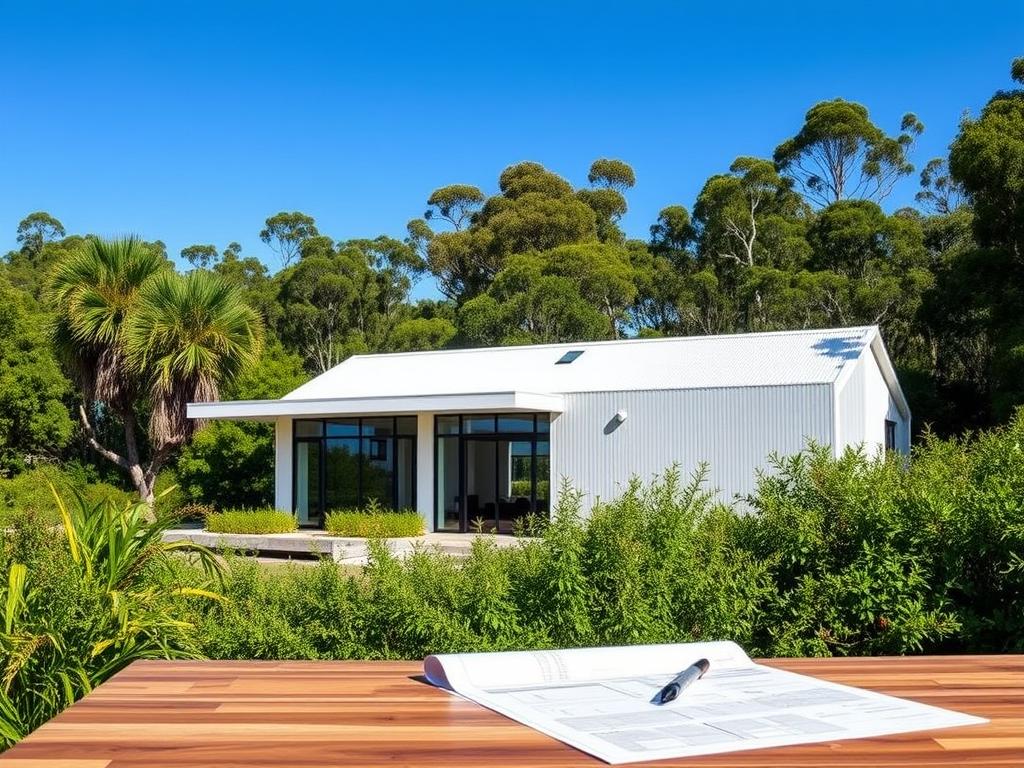
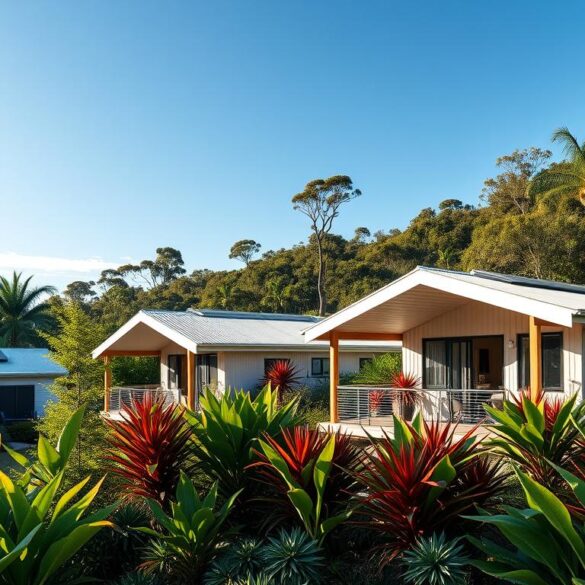
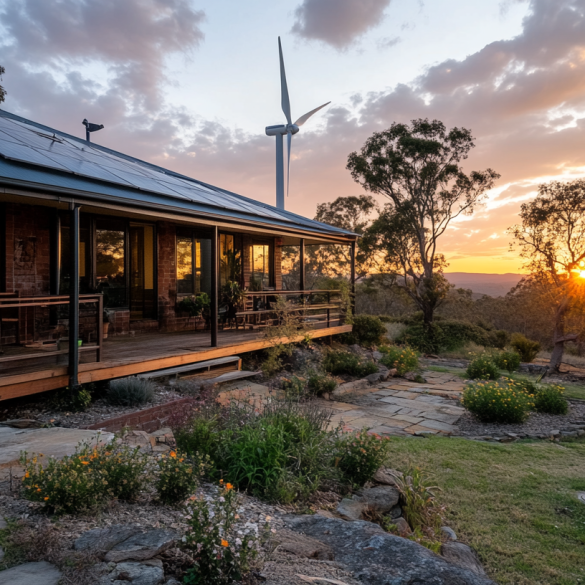

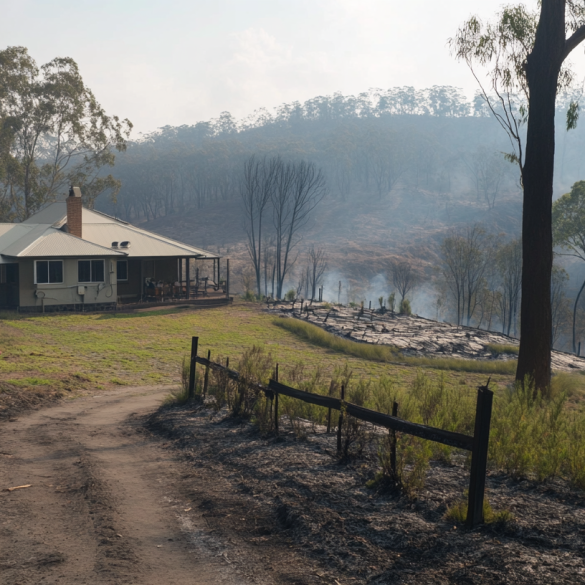
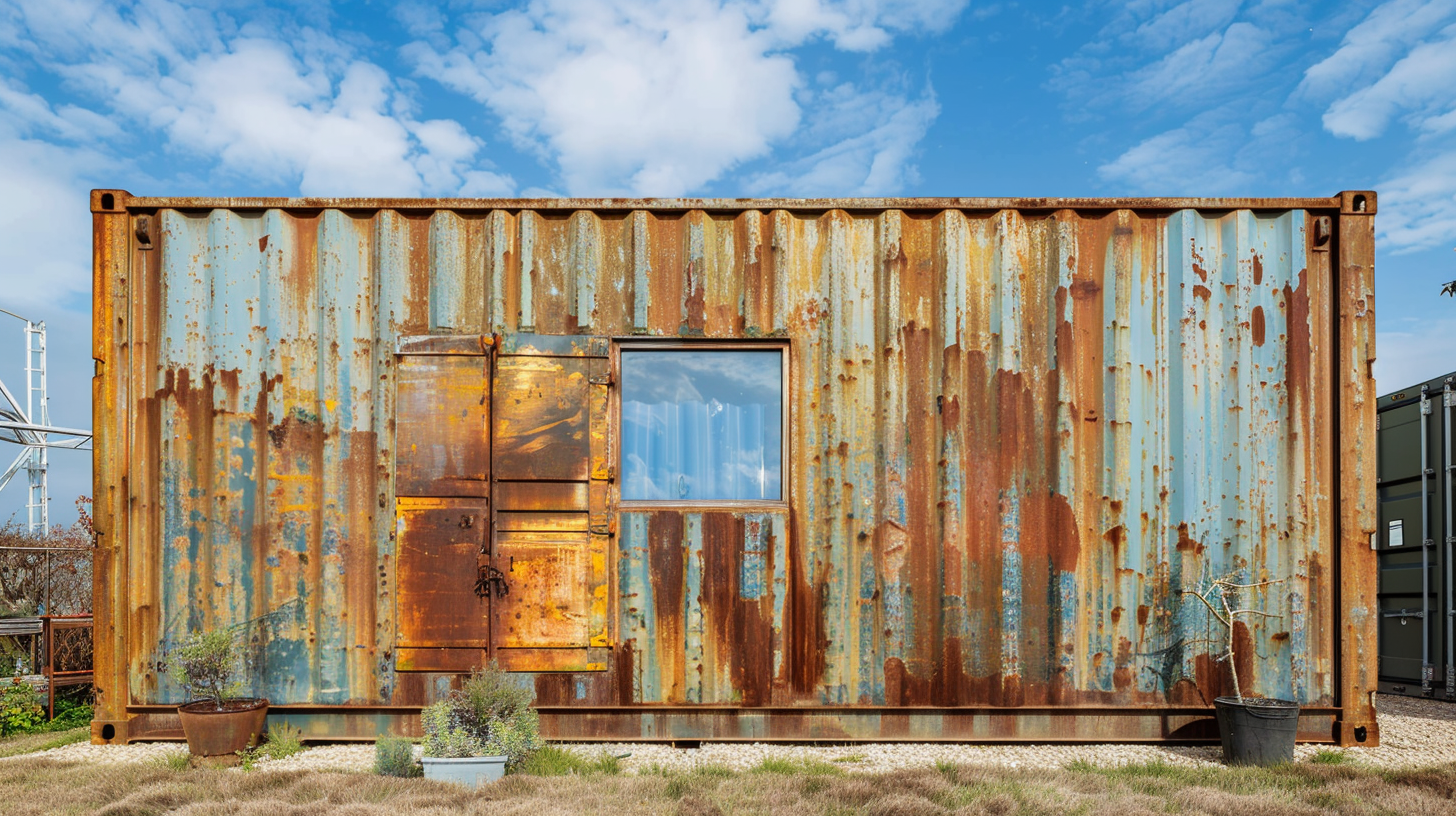

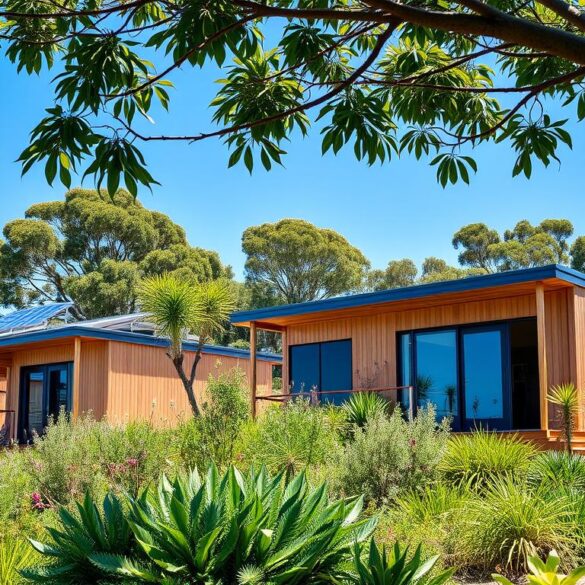

1 comment
[…] kit home must follow local building codes, especially in cyclone and bushfire zones. The National Construction Code (NCC) sets energy […]